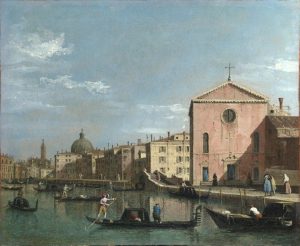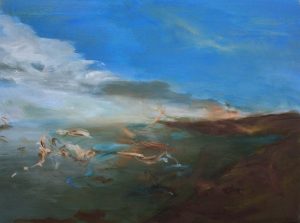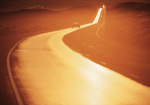A cheat’s guide to Venice. Oscar’s 5 easy tricks to avoid queues & other things

A view of the Grand Canal by Canaletto
Here’s what I learned in three days in Venice.
By the way, I went in the low-season, and before the anti-tourist movement had begun to make itself felt.
- Do reserve a place on a free walking tour. They’re conducted by volunteers who know and love Venice and want to share their city with visitors. At the end of the tour you can make a contribution to the cause (or not). The tour we picked was conducted by La Bussola (click here for their website or email [email protected]) and it was excellent. Oscar, a young Mexican landscape painter who has lived in Venice eight years, told us why he remained under the spell of his adopted city. On exploring his website, I was particularly taken by ‘Refugios’, an ” oil on canvas, 70x50cm

Refugios by Oscar I. Contreras Rojas. Go to https://oscaricontreras.com/
- Don’t bother joining the immensely long queue for tickets at the Doge’s Palace, the distinctive (but rather odd) building that’s one of the main landmarks of Venice, and a major museum. Instead (as Oscar told us) buy a ticket at another, less-popular museum and visit the Doge’s Palace without the hassle. A good place to buy a ticket? The Musee Correr, in Piazza San Marco, is not busy at all and it is just across the way from the Doge’s Palace. We did not test Oscar’s theory but have no reason to believe it would be false.
- Don’t queue interminably at St Mark’s Basilica. Though free, admission still takes longer than it should. Instead, head for Calle San Basso, one of the little alleyways off to the left of Basilica San Marco. There’s a place there to hand in your bag, your book, even a pair of sunglasses, anything really to get a coveted key that proves you’ve got left luggage. Wave the key at the guards to the Basilica and walk right in.
- Don’t pay for WCs – about 1.50 euros a pop – have an espresson (about the same or less if you quaff it at the bar) and use the loo. It’s a better exchange.
- Do see the following bits of hidden Venice:
: Palazzo Contarini del Bovolo, a small palace close to Campo Manin. It was built by the Contarini family to show off its wealth. The spiral staircase on the outside is a bit like a snail’s shell, hence the name “bovolo”. (Click here for more.)
: The Alta Acqua Libreria in Calle Longa Santa Maria Formosa (Campiello Del Tintor) . The books are piled in a huge gondola, on shelves made out of boats and old, waterlogged books!(Click here for more)
: The 16th century Palazzo Querini Stampalia in the Campo Santa Maria di Formosa has an ingenious water management feature created in the 1960s by the architect Carlos Scarpa. The museum is said to have one of the richest art collections of the city but what’s really fascinating is Scarpa’s idea for dealing with flooding at high tide. Steps allow visitors to find solid ground somewhere at the entrance even if it’s flooded and a channel runs the water through to the back garden.
Know these bits of trivia:
** The Cafe Florian, established 1721, in Piazza San Marco is said to be the world’s first known café. Casanova was a patron
** In Castello, the 13th century sestiere or district, look for the first centuries-old well to be closed because it no longer had drinkable water. The wells supplied freshwater to Venice for hundreds of years, functioning in a simple and efficient manner by channeling rainwater through stone gratings into a sandy sump, which served as a filter.

“Our battered suitcases were piled on the sidewalk again; we had longer ways to go. But no matter, the road is life”
– Jack Kerouac

